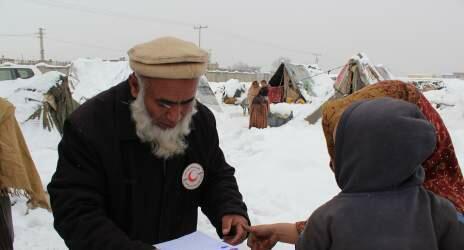
This projects falls under a landmark Memorandum of Understanding (MoU) between ANDMA and the National Society, signed in October 2012. Under this MoU, the two parties commit to work together to improve “disaster preparedness with a view to facilitate and regulate international assistance” in the event that a disaster exceeds the coping capacity of the government of Afghanistan.
A taskforce including senior representatives of ANDMA as well as the National Society secretary general and head of disaster management was established to carry out the cooperation and to oversee the legal review process. In January the taskforce met with the newly-appointed legal researcher, Mr Hashmat Nadirpor, and confirmed their commitment to the project and their support to the research process.
In his opening remarks at the meeting, Afghan Red Crescent Society Secretary General, Mr Naim Dindar emphasised the importance of a legal framework that provides essential facilities for incoming humanitarian aid, such as the rapid clearance of relief items through customs. He cautioned that a lack of legal preparedness can contribute to chaos in the coordination of national and international humanitarian relief providers. Both Mr Dindar and Mr Mohammad Aslam Sayas, Deputy Head of ANDMA, acknowledged that while a new law on disaster management was passed only last year, a review is necessary in order to identify any gaps, overlaps or inconsistencies. Mr Dindar suggested that additional issues identified in the course of the project may be addressed in a new regulation, if not in the law.